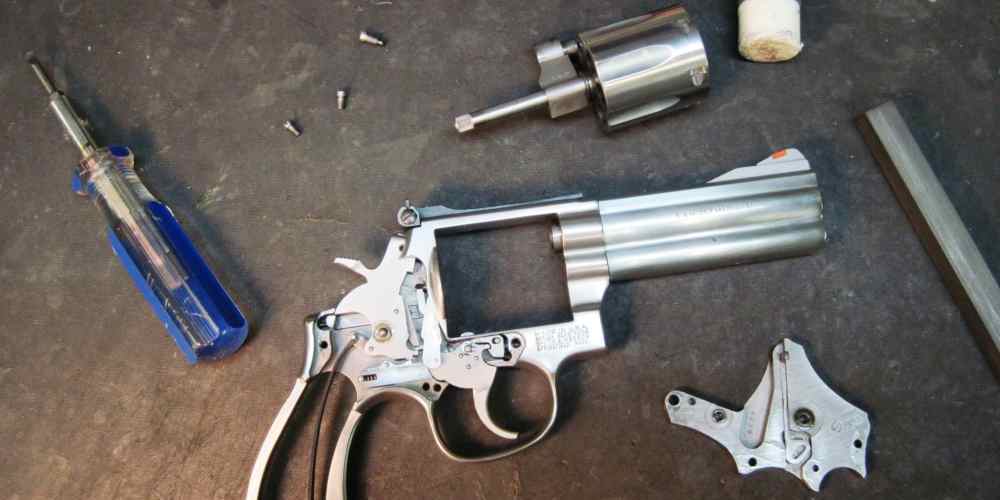“Unraveling the mystery of misfires, one spark at a time.”
Common Causes of Engine Misfires
Engine misfires can be a frustrating and potentially dangerous issue for any vehicle owner. When your engine misfires, it can lead to a loss of power, decreased fuel efficiency, and even damage to your engine over time. In this article, we will explore some of the common causes of engine misfires and how you can investigate and resolve them.
One of the most common causes of engine misfires is a problem with the ignition system. This can include issues with the spark plugs, ignition coils, or spark plug wires. If any of these components are worn out or damaged, they may not be able to properly ignite the fuel in the combustion chamber, leading to a misfire. To investigate this issue, you can start by checking the condition of your spark plugs and ignition coils. If you notice any signs of wear or damage, it may be time to replace them.
Another common cause of engine misfires is a problem with the fuel system. This can include issues with the fuel injectors, fuel pump, or fuel filter. If any of these components are clogged or malfunctioning, they may not be able to deliver the proper amount of fuel to the combustion chamber, leading to a misfire. To investigate this issue, you can start by checking the fuel pressure and inspecting the fuel injectors for any signs of clogging. If you suspect a problem with your fuel system, it may be best to have a professional mechanic take a closer look.
In some cases, engine misfires can also be caused by a problem with the air intake system. This can include issues with the air filter, mass airflow sensor, or throttle body. If any of these components are dirty or damaged, they may not be able to properly regulate the air flow into the combustion chamber, leading to a misfire. To investigate this issue, you can start by checking the condition of your air filter and inspecting the mass airflow sensor for any signs of dirt or debris. If you suspect a problem with your air intake system, it may be best to have a professional mechanic clean or replace the affected components.
It is also important to consider the possibility of a mechanical issue causing engine misfires. This can include problems with the valves, pistons, or camshaft. If any of these components are worn out or damaged, they may not be able to properly regulate the flow of air and fuel in the combustion chamber, leading to a misfire. To investigate this issue, you may need to perform a compression test to check the condition of your engine’s internal components. If you suspect a mechanical issue, it is best to have a professional mechanic inspect and repair the affected components.
In conclusion, engine misfires can be a frustrating and potentially dangerous issue for any vehicle owner. By investigating the common causes of engine misfires, such as problems with the ignition system, fuel system, air intake system, or mechanical issues, you can take the necessary steps to resolve the issue and prevent further damage to your engine. If you are unsure of how to investigate or resolve an engine misfire, it is always best to consult with a professional mechanic for assistance.
Diagnostic Tools for Identifying Misfires
Misfires in an engine can be a frustrating and potentially dangerous issue for any vehicle owner. When a misfire occurs, it can lead to decreased performance, reduced fuel efficiency, and even damage to the engine if left unresolved. In order to properly diagnose and resolve misfires, it is important to have the right diagnostic tools at your disposal.
One of the most common tools used to identify misfires is a scan tool. A scan tool is a device that connects to the vehicle’s onboard computer system and can read and interpret error codes that are generated when a misfire occurs. By using a scan tool, mechanics can quickly pinpoint the source of the misfire and take the necessary steps to resolve it.

Another useful diagnostic tool for identifying misfires is a spark tester. A spark tester is a device that allows mechanics to test the strength and consistency of the spark being generated by the ignition system. By using a spark tester, mechanics can determine if the ignition system is functioning properly and if a weak or inconsistent spark is causing the misfire.
In addition to scan tools and spark testers, a compression tester can also be a valuable tool for diagnosing misfires. A compression tester is a device that measures the compression levels in each cylinder of the engine. Low compression levels can indicate a number of issues, including worn piston rings, leaking valves, or a blown head gasket, all of which can lead to misfires.
When using diagnostic tools to identify misfires, it is important to follow a systematic approach. Start by connecting the scan tool to the vehicle’s onboard computer system and reading any error codes that are generated. Next, use a spark tester to check the strength and consistency of the spark being generated by the ignition system. Finally, use a compression tester to measure the compression levels in each cylinder of the engine.
By following this systematic approach and using the right diagnostic tools, mechanics can quickly and accurately identify the source of a misfire and take the necessary steps to resolve it. Whether the issue is a faulty spark plug, a clogged fuel injector, or a more serious mechanical problem, having the right tools at your disposal can make all the difference in effectively diagnosing and resolving misfires.
In conclusion, misfires can be a frustrating and potentially dangerous issue for any vehicle owner. By using diagnostic tools such as scan tools, spark testers, and compression testers, mechanics can quickly and accurately identify the source of a misfire and take the necessary steps to resolve it. By following a systematic approach and using the right tools, misfires can be diagnosed and resolved in a timely and efficient manner, ensuring that your vehicle continues to run smoothly and efficiently.
Tips for Resolving Misfires in Different Types of Engines
Misfires in engines can be a frustrating and potentially dangerous issue that many car owners may encounter. A misfire occurs when the air-fuel mixture in one or more cylinders fails to ignite properly, resulting in a loss of power, rough idling, and increased emissions. In this article, we will explore some tips for resolving misfires in different types of engines.
One common cause of misfires is a faulty spark plug. Spark plugs are responsible for igniting the air-fuel mixture in the combustion chamber, and if they are worn out or dirty, they may not be able to produce a strong enough spark to ignite the mixture. To resolve this issue, simply replace the spark plugs with new ones that are compatible with your engine.
Another possible cause of misfires is a clogged fuel injector. Fuel injectors are responsible for delivering fuel into the combustion chamber, and if they become clogged with dirt or debris, they may not be able to deliver the proper amount of fuel. To resolve this issue, you can try using a fuel injector cleaner to remove any buildup that may be causing the clog.
In some cases, misfires may be caused by a faulty ignition coil. Ignition coils are responsible for generating the high voltage needed to ignite the air-fuel mixture, and if they are malfunctioning, they may not be able to produce a strong enough spark. To resolve this issue, you can test the ignition coils using a multimeter to determine if they are functioning properly. If they are not, you will need to replace them with new ones.
Misfires can also be caused by a vacuum leak. Vacuum leaks occur when there is a hole or crack in the vacuum system, which can lead to a loss of pressure in the intake manifold. This can result in a lean air-fuel mixture, which may not ignite properly. To resolve this issue, you can use a smoke machine to locate the source of the leak and then seal it with a vacuum hose or gasket.
In diesel engines, misfires can be caused by a faulty glow plug. Glow plugs are responsible for heating the air in the combustion chamber to facilitate ignition, and if they are not working properly, the air-fuel mixture may not ignite. To resolve this issue, you can test the glow plugs using a multimeter to determine if they are functioning properly. If they are not, you will need to replace them with new ones.
In conclusion, misfires in engines can be a frustrating issue that can affect the performance and efficiency of your vehicle. By following these tips for resolving misfires in different types of engines, you can identify the root cause of the problem and take the necessary steps to fix it. Remember to always consult a professional mechanic if you are unsure of how to resolve the issue yourself.
Case Studies of Challenging Misfire Investigations
Misfires in an engine can be a frustrating and challenging issue to diagnose and resolve. They can be caused by a variety of factors, including fuel delivery problems, ignition system issues, or mechanical problems within the engine itself. In this article, we will explore some case studies of challenging misfire investigations and discuss the steps taken to identify and resolve the issue.
One common cause of misfires is a problem with the ignition system. In one case study, a vehicle was brought in with a complaint of a rough idle and hesitation during acceleration. The technician began by checking the spark plugs, which appeared to be in good condition. Next, they tested the ignition coils and found that one of them was faulty, causing a weak spark and intermittent misfires. By replacing the faulty ignition coil, the misfire issue was resolved, and the vehicle ran smoothly once again.
Another common cause of misfires is a problem with the fuel delivery system. In another case study, a vehicle was experiencing misfires under load, especially when climbing hills or accelerating quickly. The technician performed a fuel pressure test and found that the fuel pump was not delivering enough pressure to the fuel injectors. By replacing the fuel pump, the misfire issue was resolved, and the vehicle’s performance improved significantly.
In some cases, misfires can be caused by mechanical problems within the engine itself. In a particularly challenging case study, a vehicle was brought in with a complaint of a misfire that seemed to be occurring randomly. The technician performed a compression test and found that one of the cylinders had significantly lower compression than the others. Further inspection revealed a damaged piston ring, which was causing the misfire. By replacing the damaged piston ring, the misfire issue was resolved, and the vehicle’s engine performance was restored.
When investigating and resolving misfires, it is important to follow a systematic approach to ensure that all possible causes are considered and addressed. This may involve performing diagnostic tests, such as checking the ignition system, fuel delivery system, and engine compression, to pinpoint the source of the issue. By methodically working through each potential cause, technicians can effectively identify and resolve misfire problems, restoring the vehicle’s performance and reliability.
In conclusion, misfires can be a challenging issue to diagnose and resolve, but with a systematic approach and thorough investigation, technicians can effectively identify and address the underlying causes. By examining case studies of challenging misfire investigations, we can gain insight into the steps taken to resolve these issues and ensure that vehicles are running smoothly and efficiently. If you are experiencing misfire problems with your vehicle, don’t hesitate to seek professional help to diagnose and resolve the issue.
Preventative Maintenance to Avoid Misfires
Misfires in an engine can be a frustrating and potentially dangerous issue. They can cause a loss of power, decreased fuel efficiency, and even damage to the engine if left unresolved. In this article, we will explore the causes of misfires and discuss preventative maintenance measures that can help you avoid them.
One of the most common causes of misfires is a problem with the ignition system. This can include issues with the spark plugs, ignition coils, or spark plug wires. If any of these components are worn out or damaged, they may not be able to properly ignite the air-fuel mixture in the combustion chamber, leading to a misfire.
To prevent misfires related to the ignition system, it is important to regularly inspect and replace these components as needed. Spark plugs should be replaced according to the manufacturer’s recommendations, typically every 30,000 to 100,000 miles depending on the type of plug. Ignition coils and spark plug wires should also be inspected for signs of wear and replaced if necessary.
Another common cause of misfires is a problem with the fuel system. This can include issues with the fuel injectors, fuel pump, or fuel filter. If the fuel system is not delivering the proper amount of fuel to the combustion chamber, it can result in a misfire.
To prevent misfires related to the fuel system, it is important to regularly inspect and maintain these components. Fuel injectors should be cleaned periodically to prevent clogs, and the fuel filter should be replaced according to the manufacturer’s recommendations. Additionally, it is important to use high-quality fuel to prevent contamination that can lead to misfires.
In some cases, misfires can be caused by problems with the air intake system. This can include issues with the air filter, mass airflow sensor, or throttle body. If the engine is not receiving the proper amount of air, it can result in a misfire.
To prevent misfires related to the air intake system, it is important to regularly inspect and replace the air filter as needed. The mass airflow sensor and throttle body should also be cleaned periodically to ensure proper airflow to the engine.
Regularly scheduled maintenance is key to preventing misfires and keeping your engine running smoothly. In addition to inspecting and replacing components as needed, it is important to follow the manufacturer’s recommended maintenance schedule for your vehicle. This can help you catch potential issues before they lead to misfires and other problems.
If you do experience a misfire, it is important to address the issue promptly to prevent further damage to the engine. A diagnostic scan tool can help you identify the cause of the misfire, whether it is related to the ignition system, fuel system, or air intake system. Once the cause is identified, you can take the necessary steps to resolve the issue and prevent future misfires.
By following these preventative maintenance measures and addressing any misfires promptly, you can keep your engine running smoothly and avoid the frustration and potential damage caused by misfires. Regular maintenance and inspections are key to preventing misfires and ensuring the longevity of your vehicle.








